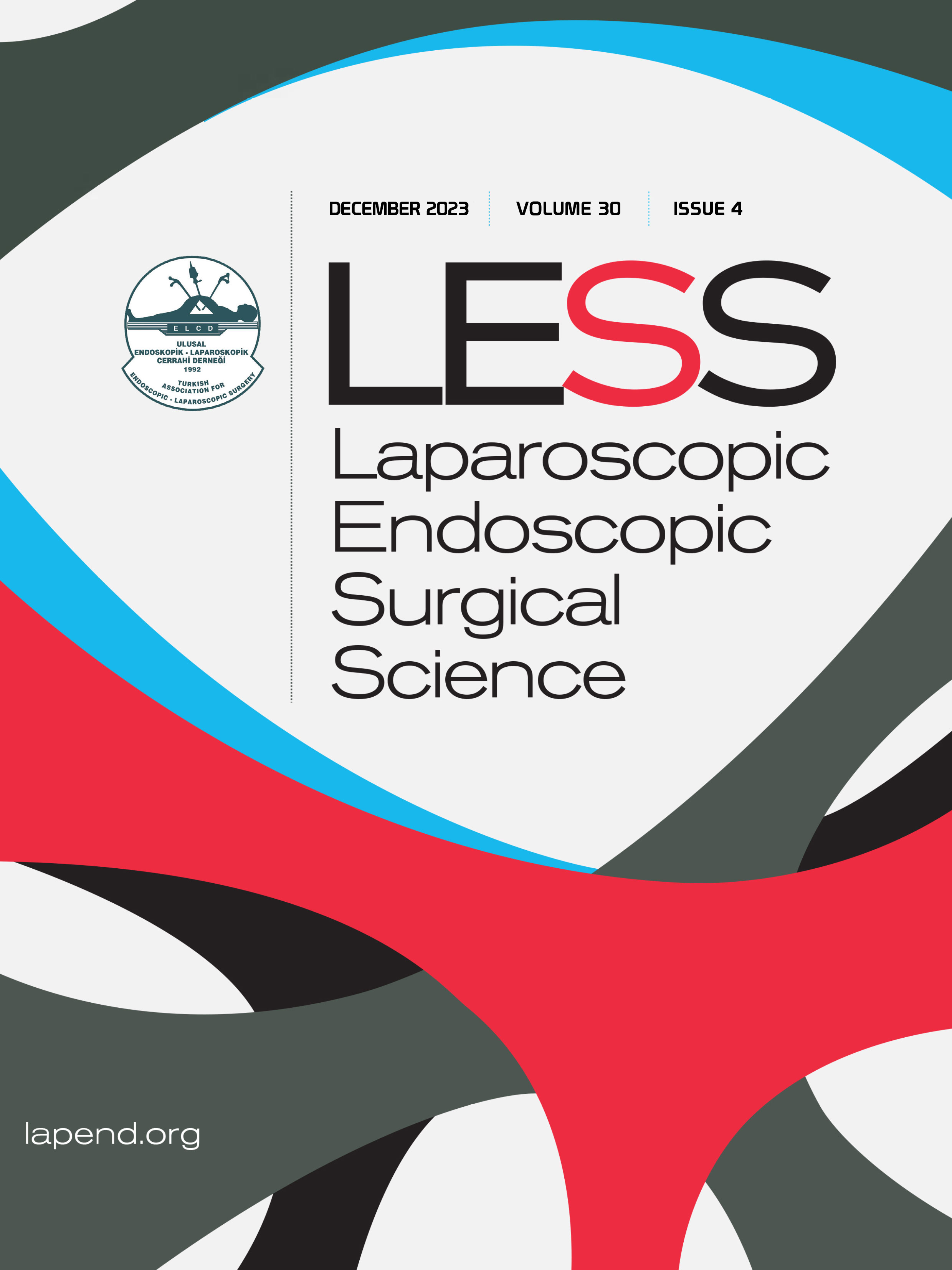The role of endoscopic retrograde cholangio-pancreaticography in the diagnosis and management of bile leakage after laparoscopic cholecystectomy
Nazif Erkan1, Mehmet Yıldırım1, Alper Fırat Polat1, Galip Ersöz2, Ömer Özütemiz21SSK İzmir Eğitim Hastanesi 11. Genel Cerrahi Kliniği, İzmir2Ege Üniversitesi Tıp Fakültesi Gastroentoroloji Kliniği, İzmir
INTRODUCTION: Laparoscopic cholecystectomy (LC) with the advantages of small incision, less pain and short hospitalization, is a also gold stantard surgical technique for symptomatic cholelithiasis. But this technique has also complications ttue to surgical anatomy, clinical condition and technical failure. Bile leakage following LC poses a major problem. In this study, we evaluated the role and importance of endoscqpic retrogradecholangio-pancreaticography (ERCP) in the diagnosis and management of bile leakage after LC.
METHODS: Between May 2000 and June 2004, the patients with bile leakage after LC were evaluted prospectively in terms of etiology, preoperative diagnostic tests, surgical technique, surgeon experience, anatomy and additional disease of the patient, postoperative diagnostic tests, timing of the ERCP, ERCP findings, morbidity and mortality. All of the laparoscopies were done by 4 trocar method.
RESULTS: A total of 260 LC were performed and 3 (1.15%) of them had bile leakage in the early postoperative period. The diagnosis of bile leakage was done by physical examination and abdominal ultrasonography. The drain which was placed intraoperatively, helped the diagnosis in two patients. The patients with bile leakage were operated by experienced surgeons.These patients had surgical anomical difficulties due to acute cholecystitis. The ERCP that was done within 24-48 hours of postoperative period, showed; cystic duct leakage due to clip insufficiency, gallbladder bed leak age from 6th segment of liver, common hepatic duct laseration at the level of junction of cystic duct and hepatic duct. All patients were treated by sphincterotomy and nasobiliary drainage was added in two patients. Mean duration of hospitalization was 4-7 days and no mortality was observed. Bile leakage was treated succefuly in all patients with no further complications by ERCP and there was no benign biliary stricture during 2.5 years median follow-up period (6 months 4 years)
DISCUSSION AND CONCLUSION: ERCP is the most useful method in the diagnosis and management of bile leakage in patients with LC, especially in the early postoperative period.
Laparoskopik Kolesistektomi Sonrası Gelişen Safra Fistülünün Tanı ve Tedavisinde Endoskopik Kolanjio Pankreatikografi
Nazif Erkan1, Mehmet Yıldırım1, Alper Fırat Polat1, Galip Ersöz2, Ömer Özütemiz21SSK İzmir Eğitim Hastanesi 11. Genel Cerrahi Kliniği, İzmir2Ege Üniversitesi Tıp Fakültesi Gastroentoroloji Kliniği, İzmir
GİRİŞ ve AMAÇ: Laparoscopic cholecystectomy (LC) with the advantages of small incision, less pain and short hospitalization, is a also gold stantard surgical technique for symptomatic cholelithiasis. But this technique has also complications ttue to surgical anatomy, clinical condition and technical failure. Bile leakage following LC poses a major problem. In this study, we evaluated the role and importance of endoscqpic retrogradecholangio-pancreaticography (ERCP) in the diagnosis and management of bile leakage after LC.
YÖNTEM ve GEREÇLER: Between May 2000 and June 2004, the patients with bile leakage after LC were evaluted prospectively in terms of etiology, preoperative diagnostic tests, surgical technique, surgeon experience, anatomy and additional disease of the patient, postoperative diagnostic tests, timing of the ERCP, ERCP findings, morbidity and mortality. All of the laparoscopies were done by 4 trocar method.
BULGULAR: A total of 260 LC were performed and 3 (1.15%) of them had bile leakage in the early postoperative period. The diagnosis of bile leakage was done by physical examination and abdominal ultrasonography. The drain which was placed intraoperatively, helped the diagnosis in two patients. The patients with bile leakage were operated by experienced surgeons.These patients had surgical anomical difficulties due to acute cholecystitis. The ERCP that was done within 24-48 hours of postoperative period, showed; cystic duct leakage due to clip insufficiency, gallbladder bed leak age from 6th segment of liver, common hepatic duct laseration at the level of junction of cystic duct and hepatic duct. All patients were treated by sphincterotomy and nasobiliary drainage was added in two patients. Mean duration of hospitalization was 4-7 days and no mortality was observed. Bile leakage was treated succefuly in all patients with no further complications by ERCP and there was no benign biliary stricture during 2.5 years median follow-up period (6 months 4 years)
TARTIŞMA ve SONUÇ: ERCP is the most useful method in the diagnosis and management of bile leakage in patients with LC, especially in the early postoperative period.
Corresponding Author: Nazif Erkan
Manuscript Language: English












